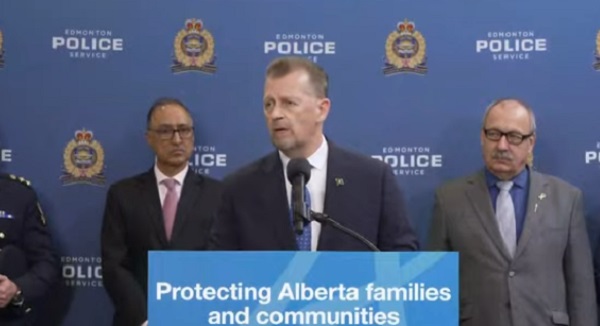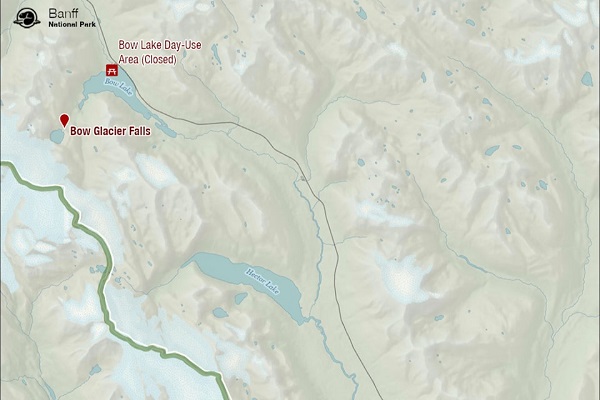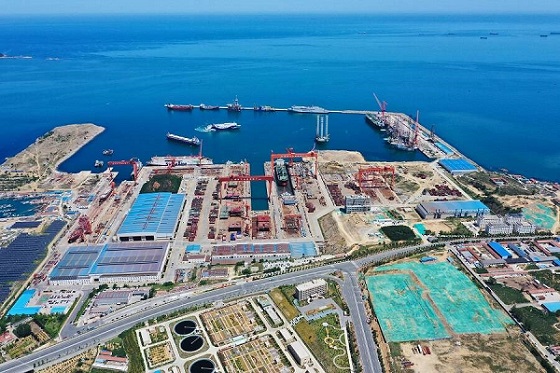Alberta
Alberta Coordinating law enforcement to fight fentanyl

Alberta’s government is working with municipalities to tackle social disorder arising from the fentanyl crisis by aligning community peace officers with local police.
Enhancing law enforcement coordination between the province and municipalities is crucial to strengthening enforcement efforts in the ongoing fight against fentanyl and the illicit drug trade. A more unified response among law enforcement agencies is crucial to effectively and efficiently addressing the fentanyl crisis and its devastating effects on Albertans.
At the request of the provincial government, more than 800 community peace officers from 34 large- and mid-sized municipalities will immediately begin coordinating operations with local police to more effectively combat social disorder stemming from the use of illicit drugs, including deadly fentanyl.
“We know a law enforcement presence will make a difference. Fentanyl continues to endanger the lives of Albertans and is devastating to families and communities. Crisis demands immediate and unified action. By aligning the efforts of community peace officers and local police, we are ensuring a coordinated, team response to combat the illicit drug trade to improve public safety. When community peace officers and local police work together in integrated street patrols, we create a visible and unified front against crime.”
“It takes a team effort to tackle the fentanyl crisis. Every level of government has a role to play. Working together with our municipal partners will ensure we can address this crisis, improve public safety for Albertans and combat fentanyl, which has destroyed families and livelihoods.”
Unifying the operational command of community peace officers under the leadership of municipal police services and the RCMP in the fight against fentanyl will make strides towards safer Alberta communities. Additionally, an increase in law enforcement boots on the ground on Alberta streets will create the operational consistency needed to more effectively combat illicit drugs, crime and social disorder. Closer operational alignment between police and community peace officers is a key part of the Alberta government’s approach to confronting urgent public safety issues with strong, cohesive law enforcement across all Alberta municipalities.
This measure is in response to the province stepping up to work collaboratively across all levels of government to address concerns around fentanyl trafficking and border security. Given the complexity and severity of these issues, municipalities have been asked to implement operational alignment to their community peace officer programs immediately. Alberta’s government appreciates the support of municipalities to tackle these growing concerns together through swift and collaborative action.
“Tackling the fentanyl crisis is critical for supporting healthy communities, and for defending Canada’s economic interests during tariff negotiations. Edmonton has been building a collaborative public safety environment for a long time, and we will continue to look for opportunities to collaborate to keep our city safe.”
“Calgary is fully aligned with the province in tackling the complex and devastating drug crisis, and we have led the way with a strong, unified response for the last several years. We recognize the severity of this issue and the critical need for continued collaboration and coordination between Calgary Police Service and our Community Peace Officers. Our integrated approach has amplified our collective impact on public safety.”
Visible officer presence matters and by having community peace officers and municipal police work together in integrated operations, Alberta’s government is bolstering the law enforcement presence that effectively deters criminals and illegal activity. When community peace officers and municipal police work together in integrated street patrols, it will create a visible and unified front against crime.
“The Alberta Association of Chiefs of Police (AACP) reaffirms its unwavering commitment to collaborating with the Province of Alberta to aggressively address the urgent challenges related to fentanyl use/trafficking, including the increased crime and disorder associated with it. The AACP supports strong collaboration and cooperation between the police of jurisdiction and municipal peace officers in an integrated response to public safety concerns. The AACP remains steadfast in its commitment to working together on pressing public safety issues.”
“Alberta Municipalities is pleased to work with the provincial government on this important initiative. Our member communities welcome the opportunity to contribute to a unified approach to tackling drug trafficking and drug use.”
“Alberta’s mid-sized cities are proud to participate in this joint effort. By enhancing law enforcement coordination, we are confident we will create a more effective system that keeps our communities and citizens safe while making real progress on reducing crime and social disorder. We thank the Government of Alberta for working side-by-side with municipalities and ensuring close collaboration on the issues that matter most to our residents.”
The province will monitor the effectiveness of these changes in improving public safety to ensure the best path forward.
Quick facts:
- In mid-February, the minister of public safety and emergency services sent formal letters to 34 municipalities requesting that they immediately begin working with police leadership to align or unify the operational command of their community peace officer programs under the leadership of their police of jurisdiction.
- Municipalities were requested to implement these changes by Feb. 24, 2025.
- There are currently 806 peace officers employed in large and mid-sized municipalities across Alberta.
Alberta
Alberta’s government is investing $5 million to help launch the world’s first direct air capture centre at Innisfail

Taking carbon capture to new heights
Alberta’s government is investing $5 million from the TIER fund to help launch the world’s first direct air capture centre.
Alberta is a global leader in environmentally responsible energy production and reducing emissions, already home to two of the largest carbon capture, utilization and storage facilities operating in North America, and seeing emissions decline across the economy.
Most of the current technologies used around the world focus on facilities and worksites. Direct air capture offers a potential new way of removing greenhouse gas emissions straight from the air. If successful, the potential is huge.
Through Emissions Reduction Alberta, $5 million is being invested from the industry-led TIER program to help Deep Sky in the design, build and operation of the world’s first direct air capture innovation and commercialization centre in Innisfail. This funding will help Alberta keep showing the world how to reduce emissions while creating jobs and increasing responsible energy production.
“We don’t need punitive taxes, anti-energy regulations or nonsensical production caps to reduce emissions. Our approach is to support industry, Alberta expertise and innovation by helping to de-risk new technology. Direct air capture has some potential and is being looked at in other jurisdictions, so it’s great to see companies choosing Alberta as a place to invest and do business in.”
“Alberta companies are leaders in developing carbon capture and storage technology. Deep Sky has the potential to take the next major step in decarbonization through direct air capture. These advancements and investments through the TIER fund are a major reason why global demand is increasing for our responsibly produced energy products.”
“Investing in Deep Sky supports Alberta’s global leadership in emissions reduction. This project accelerates cutting-edge carbon removal technologies, creates jobs and builds a platform for innovation. By capturing legacy emissions, it complements other climate solutions and positions Alberta at the forefront of a growing carbon removal economy.”
“We are thrilled to be supported by the Government of Alberta through Emissions Reduction Alberta’s investment to help deliver a world first in carbon removals right here in Alberta. This funding will be instrumental in scaling direct air capture and creating an entirely new economic opportunity for Alberta, Canada and the world.”
Deep Sky is helping establish Alberta as a global leader in carbon removal – an emerging field that is expected to grow exponentially over the next decade. The new centre is located on a five-acre site and will feature up to 10 direct air capture units, allowing multiple technologies and concepts to be tested at once. Starting this summer, Deep Sky Alpha’s units will begin pulling in air, trapping carbon dioxide, transporting it by truck, and safely storing it underground at an approved site in Legal.
This new technology will give Alberta’s oil and gas, energy and utilities, cement and heavy industry, and agriculture and agri-tech sectors new technologies to reduce emissions, while creating local jobs and reinforcing Alberta’s position as a global leader in responsible energy development.
Quick facts
- Deep Sky aims to capture 3,000 tonnes of emissions each year and estimates creating 80 construction jobs, 15 permanent jobs, and more than $100 million in local economic benefit over the next 10 years, including regional development in rural communities.
- Research shows that carbon capture technology is safe and effective. Careful site selection and rigorous monitoring serve to ensure the injected carbon dioxide remains sequestered thousands of metres below the surface, with no impact on fresh water, plants or the soil.
- Provincial funding for this project is delivered through Emissions Reduction Alberta’s Continuous Intake Program, funded by Alberta’s industry-funded Technology Innovation and Emissions Reduction (TIER) system.
Related information
Alberta
The permanent CO2 storage site at the end of the Alberta Carbon Trunk Line is just getting started

Wells at the Clive carbon capture, utilization and storage project near Red Deer, Alta. Photo courtesy Enhance Energy
From the Canadian Energy Centre
Inside Clive, a model for reducing emissions while adding value in Alberta
It’s a bright spring day on a stretch of rolling farmland just northeast of Red Deer. It’s quiet, but for the wind rushing through the grass and the soft crunch of gravel underfoot.
The unassuming wellheads spaced widely across the landscape give little hint of the significance of what is happening underground.
In just five years, this site has locked away more than 6.5 million tonnes of CO₂ — equivalent to the annual emissions of about 1.5 million cars — stored nearly four CN Towers deep beneath the surface.
The CO₂ injection has not only reduced emissions but also breathed life into an oilfield that was heading for abandonment, generating jobs, economic activity and government revenue that would have otherwise been lost.
This is Clive, the endpoint of one of Canada’s largest carbon capture, utilization and storage (CCUS) projects. And it’s just getting started.
Rooted in Alberta’s first oil boom
Clive’s history ties to Alberta’s first oil boom, with the field discovered in 1952 along the same geological trend as the legendary 1947 Leduc No. 1 gusher near Edmonton.
“The Clive field was discovered in the 1950s as really a follow-up to Leduc No. 1. This is, call it, Leduc No. 4,” said Chris Kupchenko, president of Enhance Energy, which now operates the Clive field.
Over the last 70 years Clive has produced about 70 million barrels of the site’s 130 million barrels of original oil in place, leaving enough energy behind to fuel six million gasoline-powered vehicles for one year.
“By the late 1990s and early 2000s, production had gone almost to zero,” said Candice Paton, Enhance’s vice-president of corporate affairs.
“There was resource left in the reservoir, but it would have been uneconomic to recover it.”
Gearing up for CO2
Calgary-based Enhance bought Clive in 2013 and kept it running despite high operating costs because of a major CO2 opportunity the company was developing on the horizon.
In 2008, Enhance and North West Redwater Partnership had launched development of the Alberta Carbon Trunk Line (ACTL), one of the world’s largest CO2 transportation systems.
Wolf Midstream joined the project in 2018 as the pipeline’s owner and operator.
Completed in 2020, the groundbreaking $1.2 billion project — supported by the governments of Canada and Alberta — connects carbon captured at industrial sites near Edmonton to the Clive facility.
“With CO2 we’re able to revitalize some of these fields, continue to produce some of the resource that was left behind and permanently store CO2 emissions,” Paton said.
An oversized pipeline on purpose
Each year, about 1.6 million tonnes of CO2 captured at the NWR Sturgeon Refinery and Nutrien Redwater fertilizer facility near Fort Saskatchewan travels down the trunk line to Clive.
In a unique twist, that is only about 10 per cent of the pipeline’s available space. The project partners intentionally built it with room to grow.
“We have a lot of excess capacity. The vision behind the pipe was, let’s remove barriers for the future,” Kupchenko said.
The Alberta government-supported goal was to expand CCS in the province, said James Fann, CEO of the Regina-based International CCS Knowledge Centre.
“They did it on purpose. The size of the infrastructure project creates the opportunity for other emitters to build capture projects along the way,” he said.

CO2 captured at the Sturgeon Refinery near Edmonton is transported by the Alberta Carbon Trunk Line to the Clive project. Photo courtesy North West Redwater Partnership
Extending the value of aging assets
Building more CCUS projects like Clive that incorporate enhanced oil recovery (EOR) is a model for extending the economic value of aging oil and gas fields in Alberta, Kupchenko said.
“EOR can be thought of as redeveloping real estate,” he said.
“Take an inner-city lot with a 700-square-foot house on it. The bad thing is there’s a 100-year-old house that has to be torn down. But the great thing is there’s a road to it. There’s power to it, there’s a sewer connection, there’s water, there’s all the things.
“That’s what this is. We’re redeveloping a field that was discovered 70 years ago and has at least 30 more years of life.”
The 180 existing wellbores are also all assets, Kupchenko said.
“They may not all be producing oil or injecting CO2, but every one of them is used. They are our eyes into the reservoir.”

CO2 injection well at the Clive carbon capture, utilization and storage project. Photo for the Canadian Energy Centre
Alberta’s ‘beautiful’ CCUS geology
The existing wells are an important part of measurement, monitoring and verification (MMV) at Clive.
The Alberta Energy Regulator requires CCUS projects to implement a comprehensive MMV program to assess storage performance and demonstrate the long-term safety and security of CO₂.
Katherine Romanak, a subsurface CCUS specialist at the University of Texas at Austin, said that her nearly 20 years of global research indicate the process is safe.
“There’s never been a leak of CO2 from a storage site,” she said.
Alberta’s geology is particularly suitable for CCUS, with permanent storage potential estimated at more than 100 billion tonnes.
“The geology is beautiful,” Romanak said.
“It’s the thickest reservoir rocks you’ve ever seen. It’s really good injectivity, porosity and permeability, and the confining layers are crazy thick.”
CO2-EOR gaining prominence
The extra capacity on the ACTL pipeline offers a key opportunity to capitalize on storage potential while addressing aging oil and gas fields, according to the Alberta government’s Mature Asset Strategy, released earlier this year.
The report says expanding CCUS to EOR could attract investment, cut emissions and encourage producers to reinvest in existing properties — instead of abandoning them.
However, this opportunity is limited by federal policy.
Ottawa’s CCUS Investment Tax Credit, which became available in June 2024, does not apply to EOR projects.
“Often people will equate EOR with a project that doesn’t store CO2 permanently,” Kupchenko said.
“We like to always make sure that people understand that every ton of CO2 that enters this project is permanently sequestered. And we take great effort into storing that CO2.”
The International Energy Forum — representing energy ministers from nearly 70 countries including Canada, the U.S., China, India, Norway, and Saudi Arabia — says CO₂-based EOR is gaining prominence as a carbon sequestration tool.
The technology can “transform a traditional oil recovery method into a key pillar of energy security and climate strategy,” according to a June 2025 IEF report.
Tapping into more opportunity
In Central Alberta, Enhance Energy is advancing a new permanent CO2 storage project called Origins that is designed to revitalize additional aging oil and gas fields while reducing emissions, using the ACTL pipeline.
“Origins is a hub that’s going to enable larger scale EOR development,” Kupchenko said.
“There’s at least 10 times more oil in place in this area.”
Meanwhile, Wolf Midstream is extending the pipeline further into the Edmonton region to transport more CO2 captured from additional industrial facilities.
-

 Alberta2 days ago
Alberta2 days agoAlberta Next Takes A Look At Alberta Provincial Police Force
-

 Alberta2 days ago
Alberta2 days agoThe permanent CO2 storage site at the end of the Alberta Carbon Trunk Line is just getting started
-

 armed forces1 day ago
armed forces1 day agoIt’s not enough to just make military commitments—we must also execute them
-

 Business2 days ago
Business2 days agoFederal government should finally cut Trudeau-era red tape
-

 Alberta2 days ago
Alberta2 days agoCanadian Oil Sands Production Expected to Reach All-time Highs this Year Despite Lower Oil Prices
-

 COVID-192 days ago
COVID-192 days agoNew Peer-Reviewed Study Affirms COVID Vaccines Reduce Fertility
-

 armed forces1 day ago
armed forces1 day agoNATO commits to 5% defense floor after Trump pushes allies to step up
-

 conflict2 days ago
conflict2 days agoFordow obliterated: Israeli report confirms nuclear site inoperable










